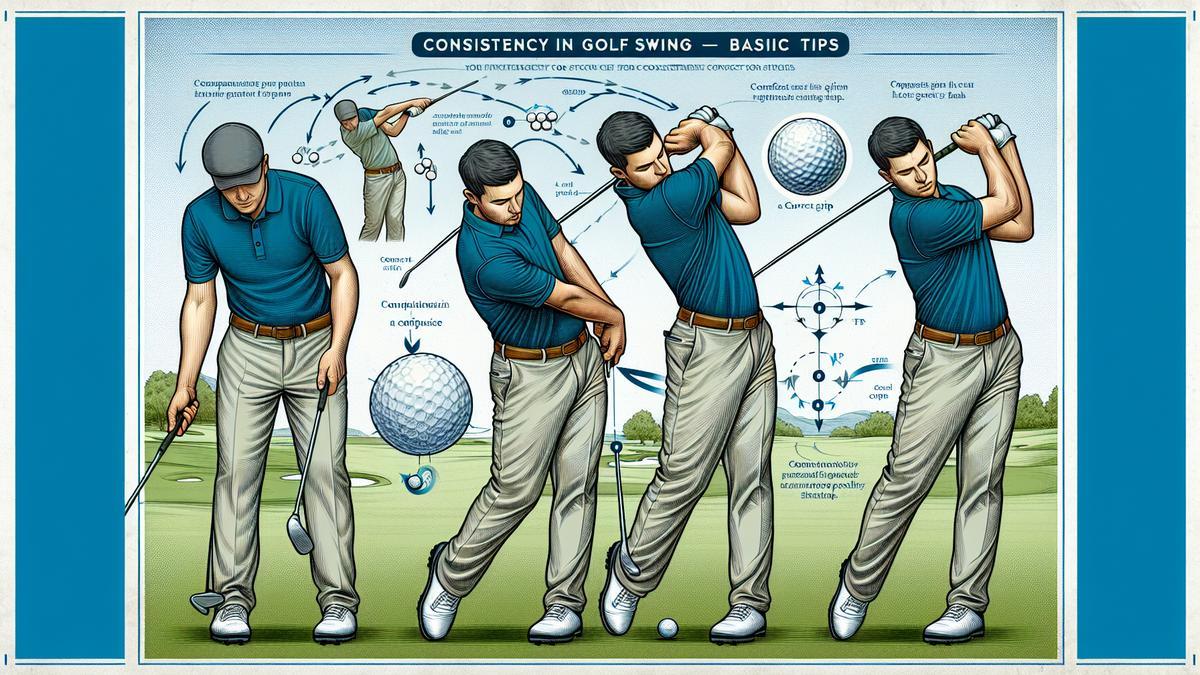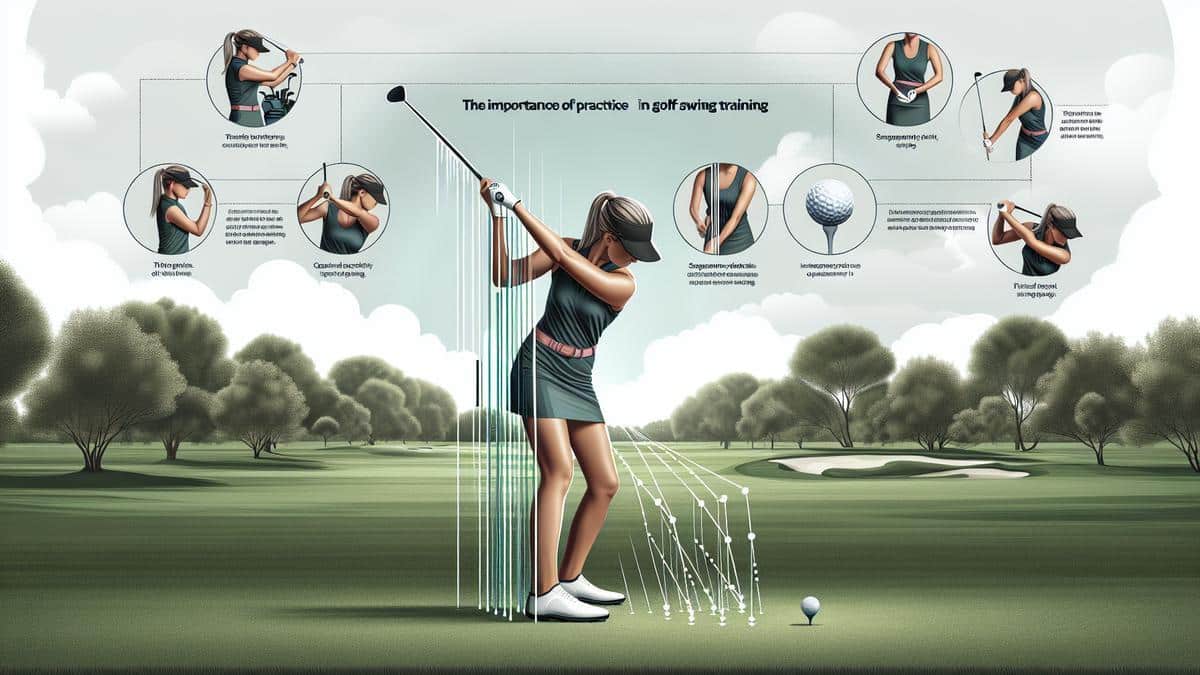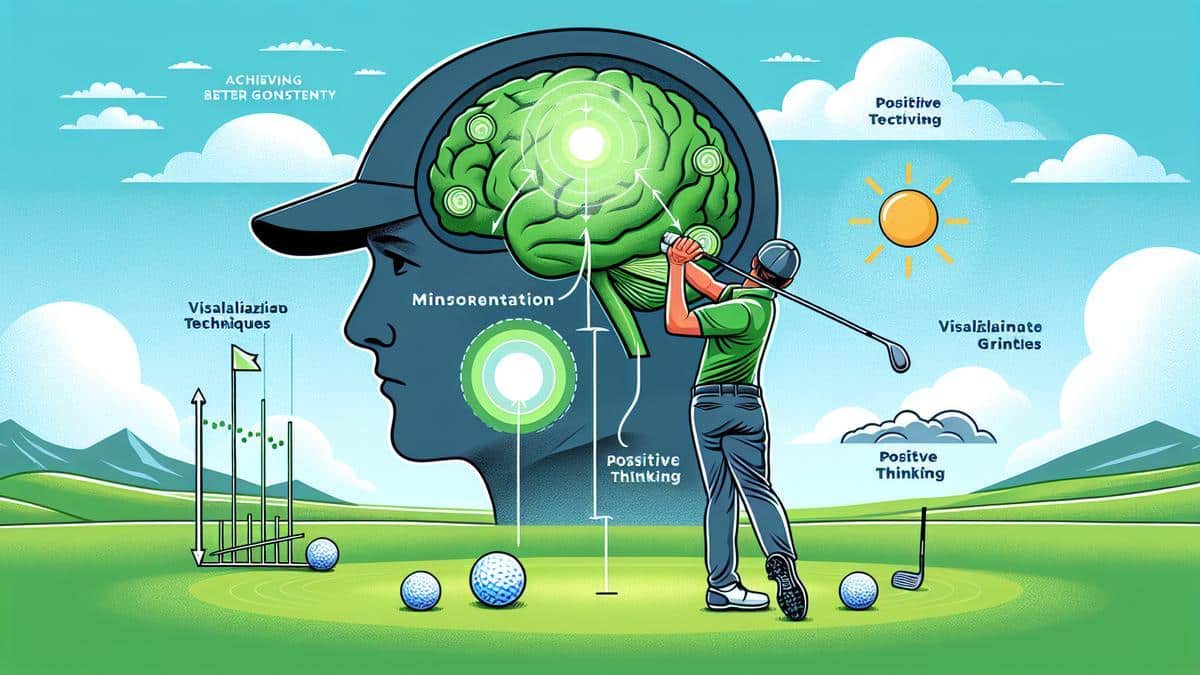If you’re looking to improve your golf swing consistency, you’ve come to the right place! This article will guide you through the basics of swing consistency, showing you why it matters and how you can enhance your performance on the greens. You’ll discover key techniques, practice tips, and mental tricks to help you become more confident and focused. Plus, we’ll dive into the importance of the right equipment for your game. Get ready to take your golf swing to the next level!
Key Lessons
- Focus on your grip for better control.
- Keep a steady stance throughout your swing.
- Use a smooth and slow backswing.
- Follow through to improve distance.
- Practice regularly to build muscle memory.
Understanding the Basics of Golf Swing Consistency
What is Golf Swing Consistency?
Golf swing consistency means hitting the ball the same way every time. When you swing your club, you want the ball to go where you aim. If your swing is consistent, you can trust that your shots will land where you expect. Think of it like riding a bike. Once you find your balance, you can ride smoothly without wobbling.
Why is Consistency Important in Golf?
Consistency is key for any golfer. Here’s why:
- Better Scores: When you hit the ball the same way, you can lower your score.
- Increased Confidence: Knowing you can repeat your swing builds your confidence.
- Easier to Improve: If your swing is consistent, it’s easier to spot mistakes and fix them.
The Role of Consistent Golf Performance
Let’s break down how consistent performance affects your game.
| Aspect | Impact of Consistency |
|———————|————————————|
| Driving | More distance and accuracy |
| Iron Shots | Better control and precision |
| Short Game | Improved chipping and putting |
| Mental Game | Less frustration, more focus |
When your performance is consistent, you can enjoy the game more. You’ll spend less time worrying about your swing and more time having fun on the course.
Key Techniques to Improve Your Golf Swing
Essential Golf Swing Tips for Beginners
Starting out in golf can feel like trying to learn a new language. But with a few key tips, you can make your swing more effective right from the start. Here’s what you need to remember:
- Grip: Hold the club with a relaxed grip. Too tight can hurt your swing.
- Stance: Stand with your feet shoulder-width apart. This gives you balance.
- Posture: Bend slightly at your hips and keep your back straight.
- Focus on the Ball: Keep your eyes on the ball until you make contact.
How to Perfect Your Golf Swing Mechanics
Perfecting your swing mechanics is like fine-tuning a musical instrument. You want everything to work in harmony. Here are some steps to help you:
- Backswing: Take the club back smoothly. Don’t rush it.
- Downswing: Shift your weight to your front foot as you swing down.
- Follow Through: After hitting the ball, let your club finish high. This helps with power and accuracy.
Here’s a quick table to visualize these steps:
| Step | Action | Key Point |
|---|---|---|
| Backswing | Smoothly take the club back | Don’t rush |
| Downswing | Shift weight to front foot | Timing is crucial |
| Follow Through | Finish high with the club | Aids power and accuracy |
Drills to Improve Golf Swing Consistency
Consistency is the name of the game. Here are some drills you can practice to improve your golf swing consistency:
- Slow Motion Swings: Swing the club slowly to focus on your form.
- Impact Bag Drill: Hit an impact bag to feel the correct contact.
- Alignment Stick Drill: Use sticks on the ground to check your alignment.
Try to practice these drills regularly. They’ll help you build muscle memory and make your swing more reliable.
The Importance of Practice in Golf Swing Training
How Often Should You Practice Your Swing?
To improve your golf swing consistency, practice is key. Think of your swing like a muscle; the more you use it, the stronger it gets. Aim to practice at least 2-3 times a week. This regularity helps you build muscle memory, making your swing feel more natural. Here’s a simple table to help you decide how often to practice based on your goals:
| Goal | Practice Frequency |
|---|---|
| Beginner | 2-3 times a week |
| Intermediate | 3-4 times a week |
| Advanced | 4-5 times a week |
Creating a Structured Practice Routine
A structured practice routine can make all the difference. Instead of just hitting balls aimlessly, focus on specific areas. Here’s a straightforward approach to structure your practice:
- Warm-Up: Spend 10 minutes stretching and hitting light shots. Incorporating warm-up exercises can enhance your performance.
- Focus Areas: Choose 2-3 aspects of your swing to work on. This could include grip, stance, or follow-through.
- Drills: Spend 15-20 minutes on each area. Use drills that target those specific skills.
- Play a Few Holes: If possible, play a few holes to apply what you’ve practiced.
- Cool Down: Finish with some stretching to relax your muscles.
The Benefits of Regular Golf Swing Drills
Regular drills can transform your game. Here’s why they are so vital:
- Builds Confidence: The more you practice, the more confident you become.
- Improves Accuracy: Drills help you focus on precision, making your shots more accurate, which is crucial for improving your accuracy.
- Enhances Muscle Memory: Repeating drills locks in the right movements, so you don’t have to think about them during a game.
Here’s a quick list of effective drills you can try:
- Mirror Drill: Check your stance and swing in a mirror.
- Slow Motion Swing: Practice your swing in slow motion to focus on form.
- Target Practice: Set up targets on the range to improve accuracy.
Analyzing Your Swing for Better Performance
Using Video Analysis to Improve Swing Technique
Video analysis is a powerful tool to help you improve your golf swing. By recording your swing, you can see what you’re doing right and where you can improve. Here’s how to make the most of it:
- Record Your Swing: Use a smartphone or camera to capture your swing from different angles.
- Watch and Compare: Look for key elements like your stance, grip, and follow-through. Compare your swing to professional golfers.
- Take Notes: Jot down what you notice. Are your arms too stiff? Is your follow-through lacking?
This simple process can lead to big improvements in your game.
Common Mistakes to Avoid in Your Golf Swing
Many golfers make the same mistakes. Here are some common pitfalls to watch out for:
- Over-Gripping the Club: Holding the club too tight can restrict your swing. Relax your grip for better control.
- Poor Stance: Your feet should be shoulder-width apart. A solid base helps with balance.
- Incorrect Alignment: Always aim your body and clubface at your target. Misalignment can lead to erratic shots.
Avoiding these mistakes will help you play better golf.
How to Identify Swing Flaws Effectively
Identifying swing flaws can feel tricky, but it’s easier than you think. Here are some tips:
| Method | Description |
|---|---|
| Video Analysis | Record and review your swing for visual feedback. |
| Feedback from Others | Ask a friend or coach to watch your swing. |
| Mirror Practice | Swing in front of a mirror to see your form. |
By using these methods, you can spot flaws and work on fixing them.
Mental Aspects of Achieving Better Golf
The Role of Focus in Golf Swing Consistency
When you’re on the golf course, focus is your best friend. It’s like having a spotlight on your swing. If you let distractions creep in, your swing can go haywire. Here’s how you can sharpen your focus:
- Eliminate Distractions: Keep your mind clear. Put away your phone and ignore the noise around you.
- Set Your Intentions: Before each shot, take a moment to think about what you want to achieve. This can help you stay locked in.
- Practice Mindfulness: Breathe deeply and be present. This can help you calm your nerves and keep your mind on the game.
Visualization Techniques for Golf Success
Imagine hitting that perfect shot. Visualization can be a game-changer for your golf performance. Here’s how to use it:
- Picture Your Swing: Close your eyes and see yourself making a great swing. Feel the club in your hands and the ball flying off the tee.
- Walk Through the Course: Visualize each hole before you play. Picture where you want to land the ball and how you will get there.
- Use Positive Imagery: Think of successful shots you’ve made in the past. This can boost your confidence and help you stay positive.
| Visualization Technique | Benefits |
|---|---|
| Picture Your Swing | Enhances muscle memory |
| Walk Through the Course | Reduces anxiety |
| Use Positive Imagery | Boosts confidence |
Building Confidence for Consistent Golf Performance
Confidence is like the wind beneath your wings. When you believe in yourself, you can soar. Here are some tips to build your confidence:
- Celebrate Small Wins: After a good shot or a solid round, take a moment to appreciate it. This builds a positive mindset.
- Practice Regularly: The more you practice, the more comfortable you’ll feel. Regular practice can help you trust your skills.
- Stay Positive: Surround yourself with encouraging friends. Their positivity can rub off on you.
Equipment Considerations for a Better Swing
Choosing the Right Golf Clubs for Your Swing
When you’re out on the course, having the right golf clubs can make a world of difference. Your clubs should feel comfortable and suit your swing style. Here are a few tips to help you pick the best clubs:
- Get Fitted: A fitting session can help you find clubs that match your height and swing speed.
- Try Different Brands: Not all clubs are created equal. Swing a few different brands to see what feels best.
- Consider Your Skill Level: If you’re just starting, you might want to choose more forgiving clubs. As you improve, you can look into more specialized options.
How Golf Balls Affect Your Swing Performance
Believe it or not, the type of golf ball you use can impact your game. Here’s what to think about:
| Feature | Soft Balls | Hard Balls |
|---|---|---|
| Feel | Softer, more control | Firmer, less control |
| Distance | Shorter, but more spin | Longer, less spin |
| Spin | High spin for short game | Low spin for distance |
Choosing the right ball can help you improve golf swing consistency. If you want more control around the greens, a softer ball might be your best bet.
The Impact of Proper Equipment on Golf Technique
Using the right equipment is like having a good map when you’re on a road trip. It guides you to your destination with fewer bumps along the way. Here’s how proper gear helps:
- Better Grip: Clubs that fit your hands well can enhance your grip. This leads to more consistent swings.
- Increased Confidence: When you know your equipment is right for you, you’ll feel more confident. Confidence can lead to better performance.
- Less Strain: Properly fitted clubs can reduce strain on your body, allowing you to swing freely and effectively.
Conclusion
In summary, improving your golf swing consistency is an exciting journey that can lead to better scores, increased confidence, and a more enjoyable time on the course. By focusing on your grip, stance, and swing mechanics, and incorporating regular practice and drills, you can develop a reliable swing that feels second nature. Remember, consistency is not just about technique—it’s about mental focus and having the right equipment too.
So, gear up, hit the practice range, and watch as your game transforms! If you’re hungry for more tips and insights, don’t hesitate to check out additional articles at Fabio Costa Online Golf. Happy golfing!
Frequently Asked Questions
What are some tips on how to improve golf swing consistency?
Start with your grip. Make sure it’s relaxed and comfortable. Practice your stance and alignment too. Focus on shifting your weight correctly during your swing.
How often should I practice to improve my golf swing?
Try to practice at least 2-3 times a week. Consistency in practice is key to getting better. This will help you find your rhythm and improve your swing.
Is it important to warm up before swinging?
Absolutely! Warming up helps your muscles and joints. This means you will swing better and reduce the risk of injury. Consider including warm-up exercises in your routine.
Can equipment affect my golf swing consistency?
Yes! The right club can make a big difference. Make sure your clubs fit you. This can help you achieve better swings every time.
Should I consider taking lessons to improve my swing?
Definitely! A coach can give you personalized tips. They can help you understand how to improve golf swing consistency faster than going solo.







Leave a Reply